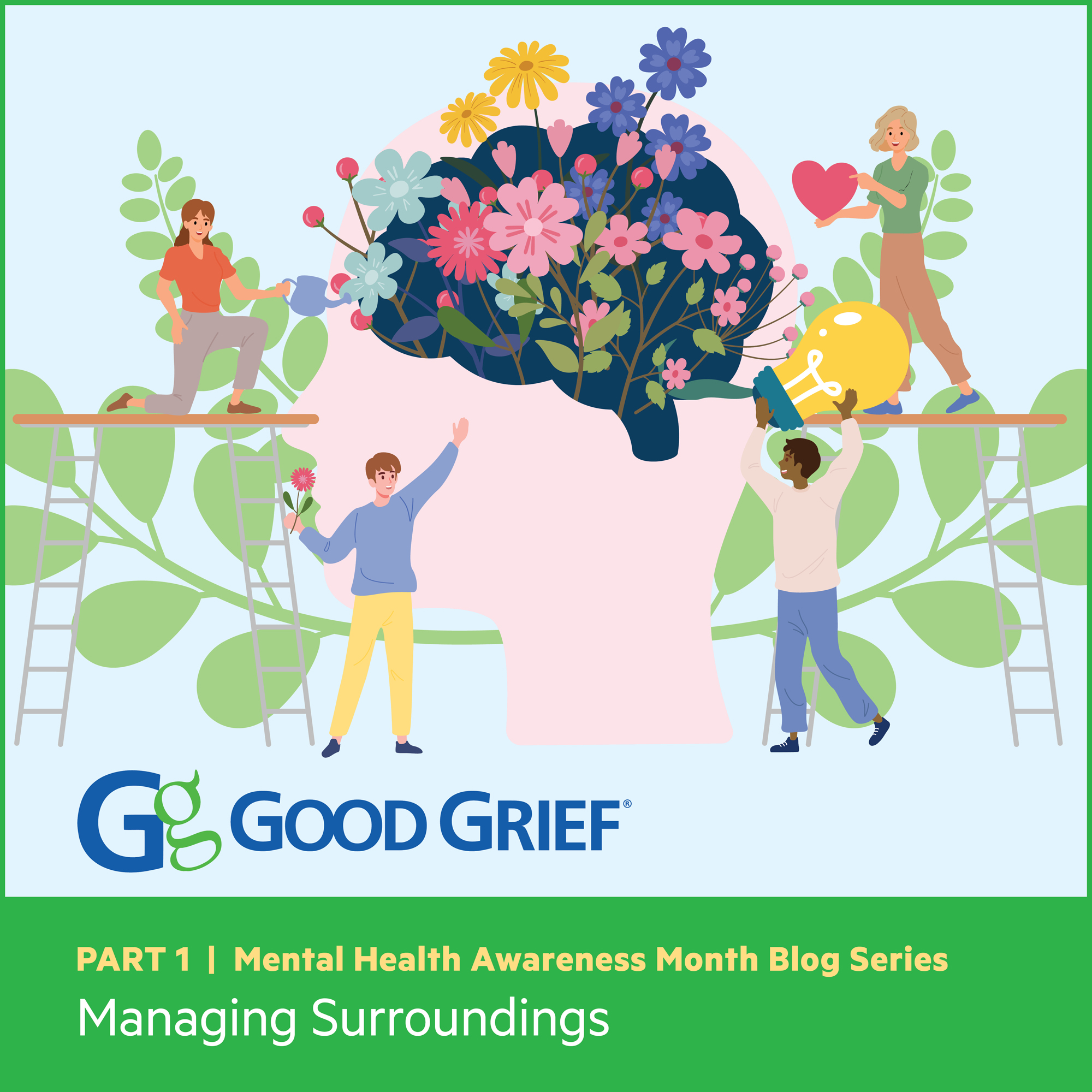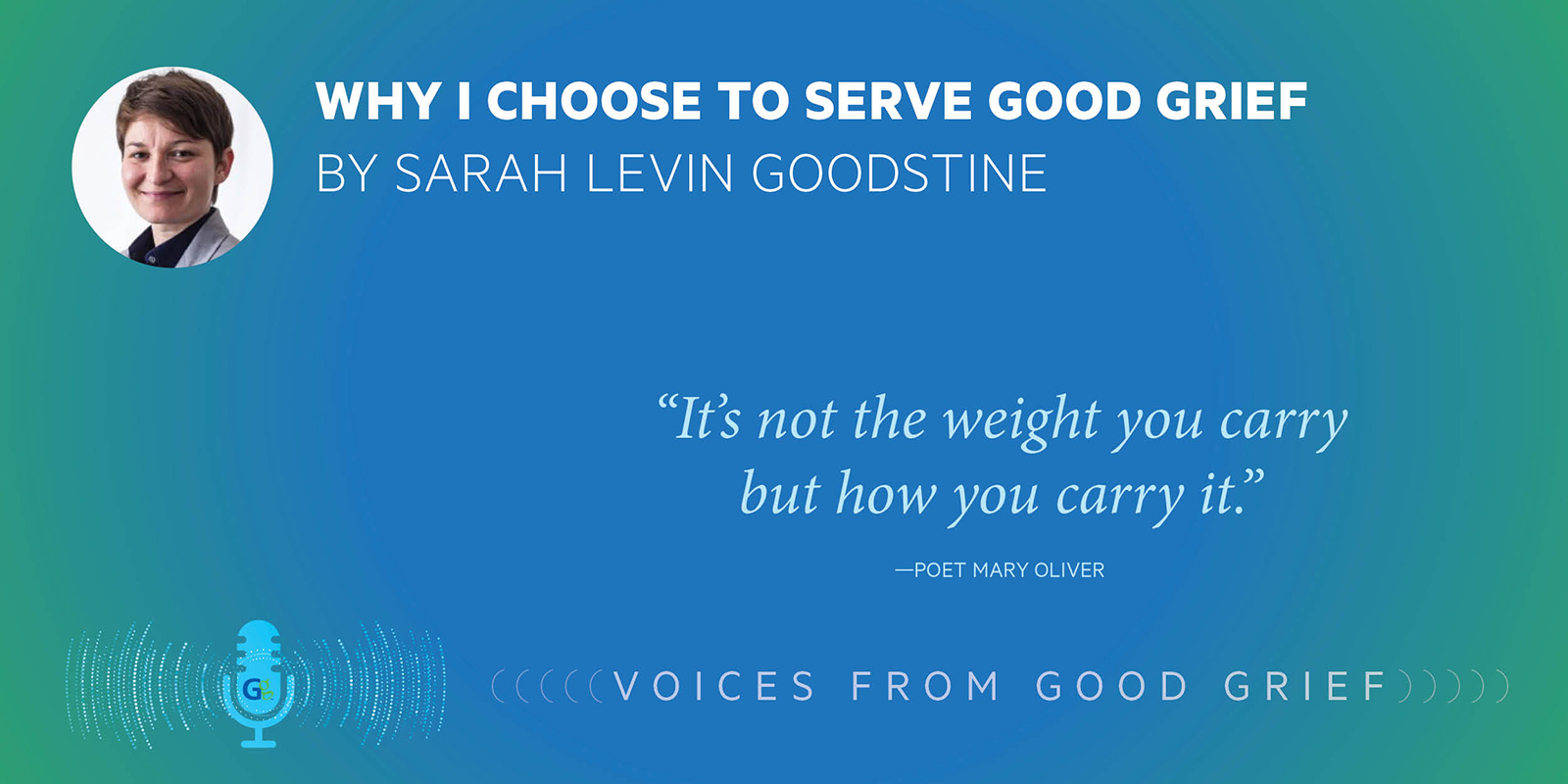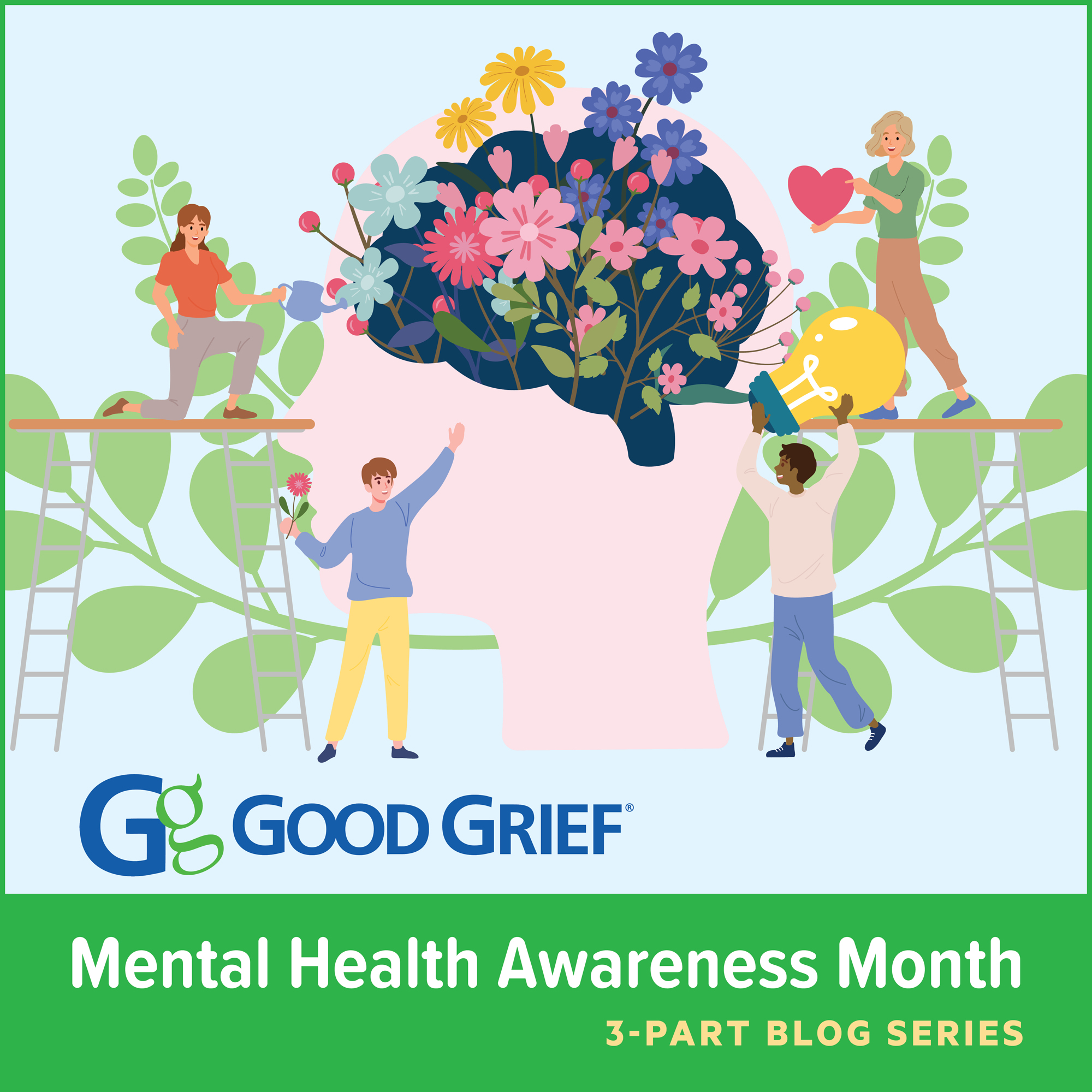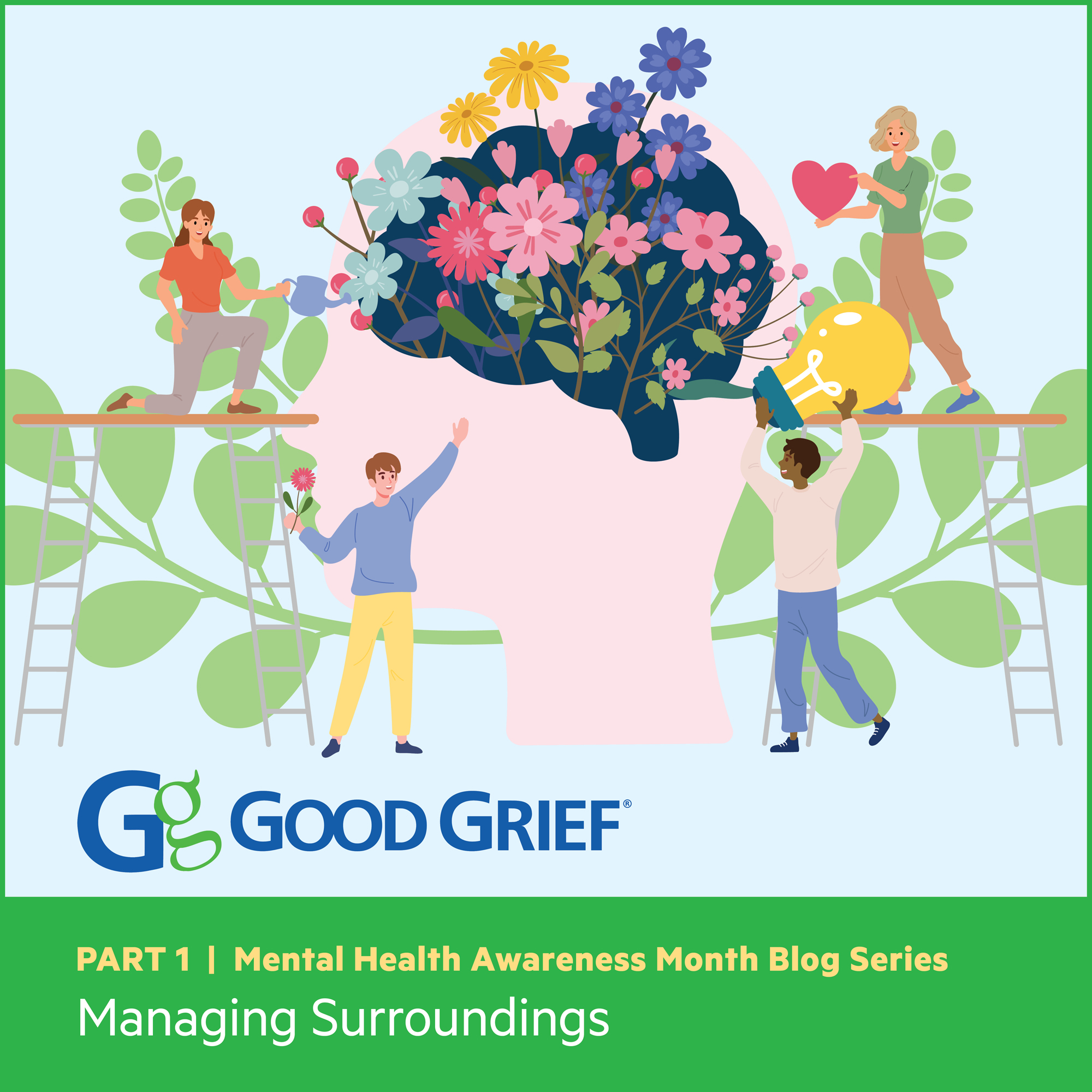
Mental Health Month #2
May is Mental Health Awareness Month and Mental Health America and Good Grief want us to take time to look around and look within in an effort to protect and improve and maintain our mental health.
Good Grief volunteer Jonathan Mathew knows grief on a very personal level. He lost his father when he was six-years-old. “It took me a long time to understand the impact of that event” on my life, he told an interviewer. Now 29-years-old, Jonathan is a yoga instructor and a health coach. He will soon open his own business called Recenter Health. He started volunteering with Good Grief two years ago.
“It felt like a serendipitous way to give back,” he said. “I love what they do with Good Grief. I have been able to work with the teen group for two years. That was a time in my life when I struggled a ton,” he added. “I didn’t realize how much of my struggles in my life were tied to grief.”
Jonathan found yoga–a practice which includes meditation, breathing and postures (called asanas)–helped him get beyond the impact of grief in his life. Yoga gave him a way to look around and look within–the theme of this year’s Mental Health America’s recognition of Mental Health Month. He shared the tools of a yoga practice with others, including the teens at Good Grief. Yoga, he noted, can help people manage their own mental health.
“Yoga is really a practice for anyone,” he said. “Even though in the West our physical practice (asanas) is emphasized the most; but breath practice is the most powerful.”
A breathing practice, Jonathan noted, can calm people even when the world around them seems chaotic. “We can’t always change our external environment,” he said, “but changing our internal environment is possible with breathing. It’s about being calm in the middle of a storm. Learning how to navigate that space and learning how to come back to that space is helpful.”
Author and Yale lecturer Emma Seppälä promotes the same idea in her 2016 TEDTalk about the Science of Happiness.
Human beings have two nervous system responses. The primary system is called the sympathetic nervous system; it is always on alert and senses danger. The sympathetic nervous system is also called the fight or flight system. Breathing techniques call upon the use of the other part of the nervous system known as the parasympathetic nervous system, or rest and digest. By learning to control the parasympathetic nervous system with breathing techniques, a person (even children) can learn to calm themselves.
Here is one of Seppälä’s breathing practices which she says can help someone destress in five minutes.
Embarking on a yoga practice–or even just learning to breathe to control one’s emotions–has many benefits for one’s mental health. Anyone wanting to find yoga classes can look within their own community. Many times, yoga classes are offered at YMCAs and gymnasiums. “To engage in yoga is to find a good teacher and a good community,” Jonathan said. “There are smaller studios and good communities of people who can help. Many people who come to yoga come looking for more calm and ease in their lives.”
Learn more about Good Grief’s peer-support programming, where we provide a safe and welcoming environment for children and families to learn and practice healthy coping, self-care, and build community together at https://good-grief.org/





